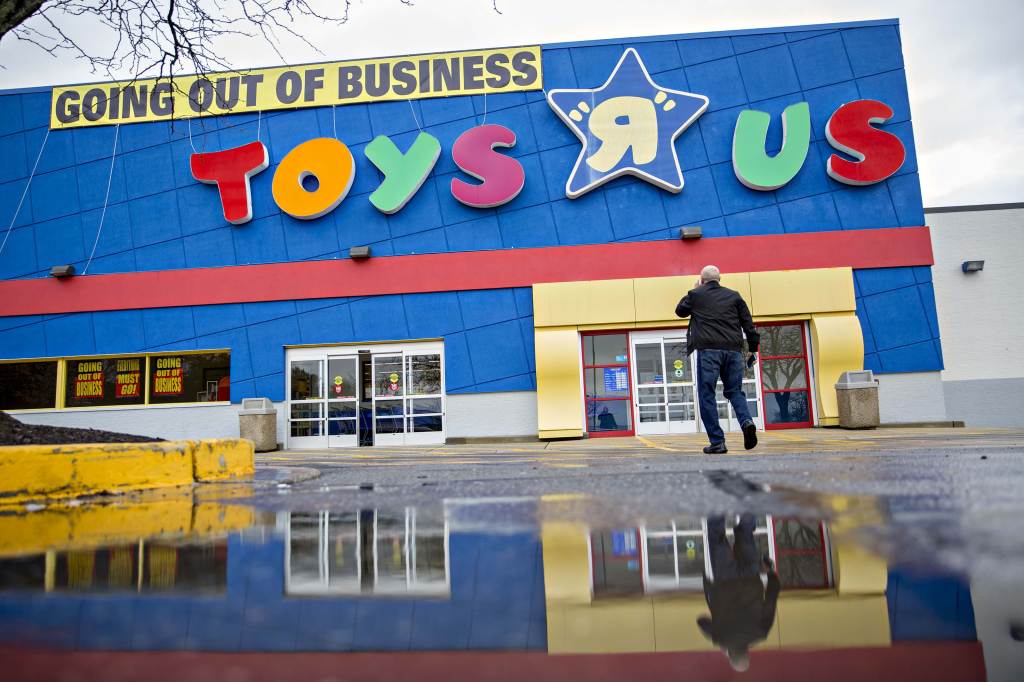
Looking at economies around the world, it’s easy to think that reconciling markets with justice, or profit with basic fairness and human decency, is simply impossible. With the looming risks that come with automation and other technology-related shifts in the nature of work, the tension between what’s good for investors and what’s good for workers has seemed increasingly difficult to resolve.
There is great uncertainty about the future of work—and for many reasons, not least the lack of focused political will and policy attention to the future of work and workers. One reminder of that inattention is the sharp growth of economic insecurity over recent decades, even as the income and wealth of the affluent soared. As Nobel Prize-winning economist Joseph Stiglitz persuasively argues, based on decades of economic trends across the globe, “inequality is a choice,” not the inevitable consequence of technological progress, the laws of physics, or the iron law of the market.
There are also plenty of examples of market behavior, including investor decisions, that exacerbate job loss and income insecurity. And nowhere are the changes and vast stakes more apparent than in the retail economy—including in the consumer products industry that each of us touches every day.
A large and important asset class for investors, private equity is playing a major role in the transformation of retail, in America and across the globe. This in itself is not surprising: One of the functions of private equity investment is to finance early-stage ideas and companies. Another is to help transform mature companies, for greater competitiveness. Done well and responsibly, both functions are important for creating an economy that can grow and generate good, sustainable work.
But too often, we have seen private equity funds focus narrowly on maximizing profits through leveraged buyout practices that come at the expense of disadvantaged workers, families, and communities. And as with other sectors of finance, like the mortgage market, predatory practices are a concern. It is not the basic fact of retail transformation, then, that should concern us, but the way that transformation is taking shape and the role that investment practices are playing in it. The stakes are enormous in a job-intensive sector of the economy that has been shedding jobs rapidly. Based on industry reports and Bureau of Labor Statistics surveys, as of November, retail had shed 96,504 jobs this year, well above all other sectors.
The promising case of Toys “R” Us
Last month brought an encouraging, and significant, surprise—in the biggest retail bankruptcy of the year, no less. Bain Capital and KKR, two leaders in private equity investing, created a $20 million fund for former employees of Toys “R” Us. This followed the widely publicized liquidation, driven by the company’s debt holders (including Solus, Angelo Gordon, and Oaktree) of more than 700 Toys “R” Us retail locations nationwide—a process that left 33,000 workers with no severance, including those who had worked for the iconic toy company for decades.
Thousands of Toys “R” Us workers had responded to a call from Organization United for Respect (OUR), along with the nonprofit Private Equity Stakeholder Project and Center for Popular Democracy, to pressure the company’s owners to establish such a fund to address the needs of displaced workers. Crucially, this coalition also advocated to the public pension funds that represent major institutional investors in Bain and KKR’s funds. Now, as reported in Bloomberg and other media, those fund managers will use a portion of the $470 million in interest payments and management fees they earned as owners of Toys “R” Us to pay for workers’ severance.
Though the fund is not enough to provide full severance for all Toys “R” Us workers who lost their jobs, the effort is one to celebrate—and replicate widely in retail as well as other sectors in transition. Meanwhile, OUR is building a base of workers at Toys “R” Us, Sears, and other retailers nationwide. The workers are organizing to convince other private equity firms responsible for the company’s bankruptcy to expand the fund to $75 million—the amount workers would have been owed if the company’s severance policy had remained intact.
Toys “R” Us is a well-loved brand, and its bankruptcy is the third largest in US history. The company’s fall is the cautionary tale of a volatile economy—but also a revealing example of how private capital can do well financially while doing better by affected workers and their families.
How did we get here?
In the early 2000’s, in the run-up to the Great Recession, private equity began snapping up retail chains like Sears and Toys “R” Us. In the so-called “retail apocalypse” of 2016 and 2017, having added massive debt to retailers’ balance sheets without making the companies competitive, private equity-owned firms announced large-scale store closures and job cuts. This totaled 130,000 jobs, or 61 percent of all retail employment losses.
Many observers have speculated that Amazon and other major movers in e-commerce are the sole force behind the abrupt chain bankruptcies across the country and the overall decline in retail jobs. Amazon had annual sales of just under $178 billion in 2018, second only to Wal-Mart, and growing—and it controls a stunning 50 percent of the e-commerce market.
But the reality is more complicated. When we lift the hood on the role of finance in the economy, investors are garnering a growing share of national income. This would not be so alarming if it did not come at the expense of workers and their families—or the communities left to pick up the tab for massive economic dislocation and the stresses it creates.
In addition, the job decline in the consumer products sector has more to do with demographic shifts and rising disparities in income and wealth, which profoundly affects who can afford to consume. The retail industry mistakenly believed the recovering economy was booming across the board, even as millions of working families continued to cope with serious and prolonged economic insecurity. At Ford Foundation, as the uneven recovery unfolded, we invested in landmark research, captured in the award-winning book The Financial Diaries (2017), that showed just how pervasive this economic security is and how far it extends from the very poor right up into the middle class.
Over the course of the economic recovery, developers and retail companies continued to expand their reach, betting this would translate into more customers. In reality, fewer working people are able to buy large and important categories of goods because of their persistently low and unpredictable incomes. The Financial Diaries underscored the importance of that volatility and unpredictability in particular—as well as substantial, costly household debt and rising housing costs.
Add to this the corporate concentration of the retail sector, and the picture spells more bad outcomes—major job loss, fewer benefits, pressure to keep wages flat or to outsource work, and more—for many types of employees, especially the low-wage workers who tend to have fewer options. And we know that such outcomes have a ripple effect on communities, as fewer local retail jobs can lead towns to shrink. The tax base diminishes, local governments cut services and underinvest in vital infrastructure, young workers—who are generally more mobile—look for opportunity elsewhere, and population and potential tax base decline further.
Toward solutions that make a real difference for workers
Those are some of the forces—and triggers we have come to see as inevitable—that lead to a costly and demoralizing downward spiral, especially in the smaller communities across the country that feel the economy has simply left them behind.
Private capital is playing a clear and important role in shaping those changes. And investors, especially private equity investors and the fund managers that represent them, have more choices than the prevailing narrative about dynamic markets—or “creative destruction”—would have us believe.
It is by now commonplace to note that this is not the first time our economy and society have faced a large-scale and highly disruptive transition. And it’s not the first time that observers have made major pronouncements about the coming end of work—or, more precisely, the obsolescence of workers—due to machines and automation.
So what do we know with confidence at this point? The most recent research shows that in the short and medium term, jobs will increasingly become unbundled as tasks. Automation will disrupt the workforce, but jobs will be both created and eliminated, meaning that net job impact could be far less gloomy than some predictions would suggest. Again, that’s in the near to medium term, over the next several years.
Even as we think about the longer term—what tasks will be in demand and how to meet that demand, what “having a job” will mean, how to reinvent economic security for a different kind of economy—we need to move quickly to develop solutions that make a difference now, particularly as workers are displaced in large parts of the job economy we have. The Toys “R” Us experience shows what that can look like and what it can accomplish, to cushion those most vulnerable to change.
A tale both hopeful and cautionary
In the retail sector’s peak season, the collapse of a popular consumer brand—one with thousands of long-term and loyal employees—represents a tale both cautionary and inspiring. On the cautionary side, it is a reminder of just how rapidly large numbers of workers can be affected by industry shifts, and by private investment as a central force in those shifts. On the hopeful and more surprising side, it is a reminder that investors have choices—and that we can build a rapid-response infrastructure to cushion such job losses and widespread store closures.
Likewise, lets remember that private investors did well even when leveraged buy-outs and share buy-backs and the like were not the norm in the capital markets—i.e., long before the “financialization” of so much profit in the economy. Renowned business journalist Rana Foroohar offers an exhaustively documented and persuasive case in her acclaimed book, Makers and Takers: The Rise of Finance and the Fall of American Business (2016). Scholarly experts and some of the world’s leading investors, from BlackRock CEO Larry Fink to Warren Buffett, have made the case as well.
The better we understand what really drives job creation and job loss in our economy, the better equipped we will be to act now in ways that matter for workers and companies alike, long into the future. The case of Toys “R” Us shows that rapid and painful economic dislocation is not a predetermined outcome—let alone an iron law of successful capitalism—after all.
Note: An earlier version of this piece incorrectly stated that Amazon has annual sales of over $900 billion, a figure indicating the company’s recent market capitalization, which fluctuates significantly as its stock is traded each day. The correct and most up-to-date sales figure is $177.9 billion in sales in 2018, as amended above.

